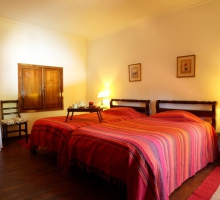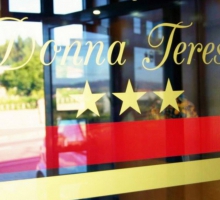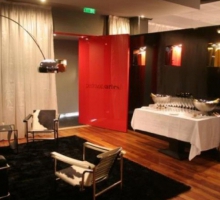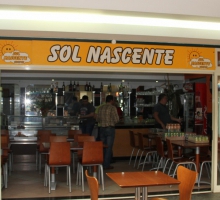The Entre Soutos Area is a valley where the relative humidity achives significant values. This is a substantially flat area with good sun exposure, presenting slope and shadow areas only near the East and West limits.
The area is rich in heritage, especially the set of the existing water mills on the banks of river Ave. Dams, pontoons, pillars and ancient arbours are other important elements.
The water, the agricultural soil and the forest seems the "three natural resources par excellence."
The alternating areas between the agricultural and the forest land offer a diversity of different species of great importance to conservation, due to the presence of the discontinuities, watercourses and bushes.
The riparian gallery performs essential functions for the ecological balance of the river banks.
In the area of the park, along the water lines and the banks, the trees constitute a settlement of the riparian gallery, appearing in the form of scattered trees. Among the larger species (tree and shrub), stand out the alder (Alnus glutinosa), the ash tree (Fraxinus angustifolia, mainly in the larger alluvial terraces of the river Ave), the grey willow (Salix atrocinerea), the plane tree (Platanus hybrida) and the grey sallow (atrocinerea Salix). For the herbaceous formations, it is common the poison hemlock (Oenanthe crocata) and a water-canary grass (Phalaris arundinacea) forming communities in the flowing water courses, which are very rich in nitrates. The corn and the vineyards are the predominant cultures in the park. Associated with this heterogeneous environment there is a group of animals which are adapted to the specific ecology of this ecosystem, which is characterized mainly by the cultivated plant species. The several structural components of the landscape are differently used by the animal species. As an example we can mention the toad that feeds itself of invertebrades, living inside the walls, and the mole that lives in galeries under the ground. Some birds, such as the wren, they prefer the bush vegetation which covers the walls delimiting the crop land.
It is worth noting the presence of vulnerable or endangered species listed in the “Livro Vermelho de Vertebrados de Portugal”, such as the king fisher, the plover, the capped heron and the tern among others. In the rivers that abound in this area, there are communities of amphibians species like the Iberian frog, the orange belly newt and the lusitanian salamander, which are nearly threatened, as awarded by UINC - International Union for Conservation of Nature.
Even being a degraded area, it is to enhance the existing fauna biodiversity. This fact allows to accommodate a greater diversity (fauna and flora), making it a refuge area.
The diversity and nature of the components of this flora, determine the amount of solar radiation that reachs the water as well as the temperature changes. On the other hand, they offer shelter locations to several animal species, such as the moorhen or the plover, leading to the production of significant quantities of organic matter, with important effects on the quantity and quality of decomposer organisms.
Location: Trofa
The area is rich in heritage, especially the set of the existing water mills on the banks of river Ave. Dams, pontoons, pillars and ancient arbours are other important elements.
The water, the agricultural soil and the forest seems the "three natural resources par excellence."
The alternating areas between the agricultural and the forest land offer a diversity of different species of great importance to conservation, due to the presence of the discontinuities, watercourses and bushes.
The riparian gallery performs essential functions for the ecological balance of the river banks.
In the area of the park, along the water lines and the banks, the trees constitute a settlement of the riparian gallery, appearing in the form of scattered trees. Among the larger species (tree and shrub), stand out the alder (Alnus glutinosa), the ash tree (Fraxinus angustifolia, mainly in the larger alluvial terraces of the river Ave), the grey willow (Salix atrocinerea), the plane tree (Platanus hybrida) and the grey sallow (atrocinerea Salix). For the herbaceous formations, it is common the poison hemlock (Oenanthe crocata) and a water-canary grass (Phalaris arundinacea) forming communities in the flowing water courses, which are very rich in nitrates. The corn and the vineyards are the predominant cultures in the park. Associated with this heterogeneous environment there is a group of animals which are adapted to the specific ecology of this ecosystem, which is characterized mainly by the cultivated plant species. The several structural components of the landscape are differently used by the animal species. As an example we can mention the toad that feeds itself of invertebrades, living inside the walls, and the mole that lives in galeries under the ground. Some birds, such as the wren, they prefer the bush vegetation which covers the walls delimiting the crop land.
It is worth noting the presence of vulnerable or endangered species listed in the “Livro Vermelho de Vertebrados de Portugal”, such as the king fisher, the plover, the capped heron and the tern among others. In the rivers that abound in this area, there are communities of amphibians species like the Iberian frog, the orange belly newt and the lusitanian salamander, which are nearly threatened, as awarded by UINC - International Union for Conservation of Nature.
Even being a degraded area, it is to enhance the existing fauna biodiversity. This fact allows to accommodate a greater diversity (fauna and flora), making it a refuge area.
The diversity and nature of the components of this flora, determine the amount of solar radiation that reachs the water as well as the temperature changes. On the other hand, they offer shelter locations to several animal species, such as the moorhen or the plover, leading to the production of significant quantities of organic matter, with important effects on the quantity and quality of decomposer organisms.
Location: Trofa







